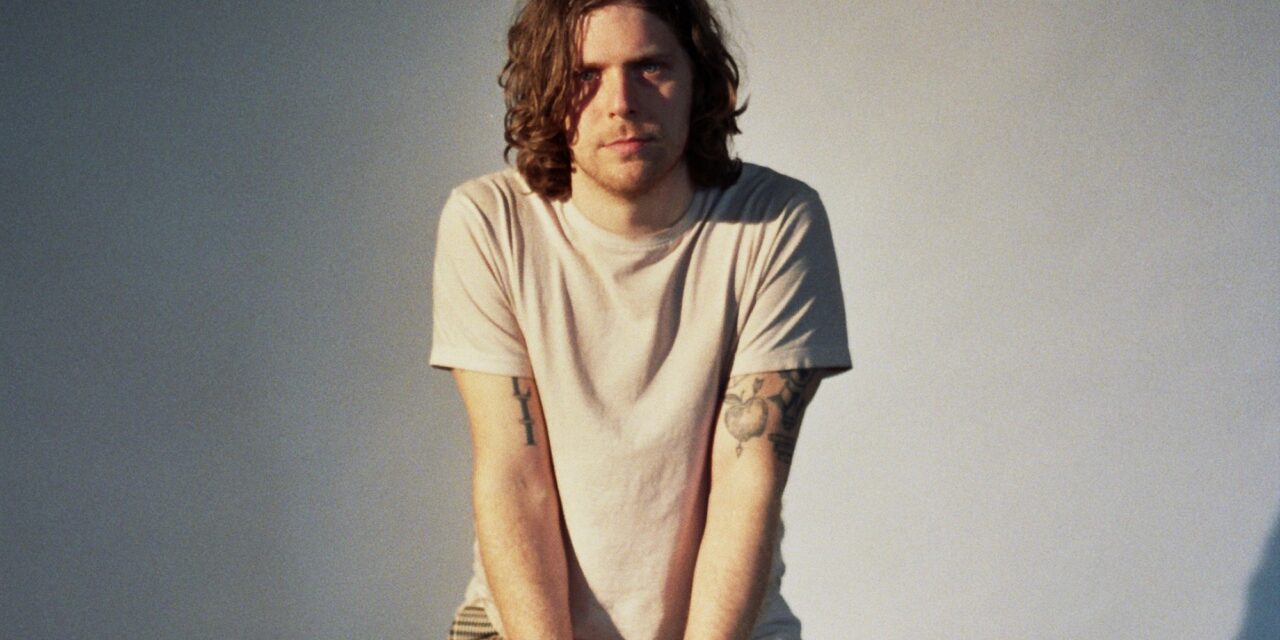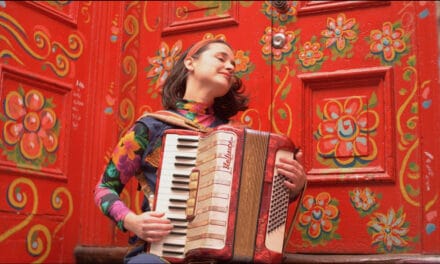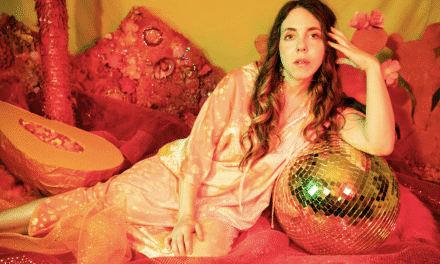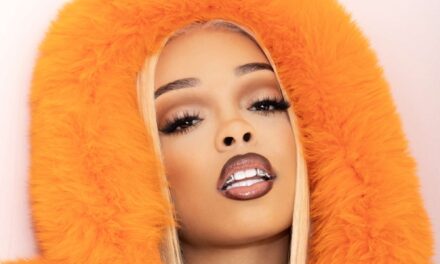Picking up where he left off with 2020’s buoyant Lower Powers EP (Landland Colportage) under the D.H. Currier moniker, Chicago indie whiz Dustin Currier makes use of a signature sonic palette to expand that genre-agnostic pomp and circumstance (and personnel) on the debut Lightleak LP, Tender Fits. In between facilitating remote music classes as a public school teacher and working on his other projects Ands and Cut Teeth, Currier utilized time in quarantine to self-produce this remarkable collection—arranging an exuberant brass section atop a bed of wiry, interlocking guitars, dizzying keyboards, and a nimble rhythm section. But according to Currier, “bringing other people in was paramount to making something that is three-dimensional and really worth listening to,” so he enlisted the art-punk audio ace Chad Clark (Beauty Pill, Dismemberment Plan) to mix the album; Sadie Dupuis (Speedy Ortiz, Sad13), Vivian McConnell (V.V. Lightbody), and Krystal Rosenbrock on additional vocals; Seth Engel (Options) on drums; Ben Grigg (Geronimo!) on trumpet; and Logan Bloom on trombone.
Lightleak’s triumphant debut is sure to resonate with fans of forward-thinking indie and punk-adjacent acts (e.g. Fugazi, Deerhoof) as much as connoisseurs of classic songwriting (e.g. Arthur Russell, Elvis Costello) and other genre-bending pioneers (e.g. Tortoise, Birthmark). From the album’s opening moments, the band welcomes the listener into its own little singular world via intermittent laughter-laden practice clips, stick clicks, and field recordings reminiscent of Fugazi’s Red Medicine. While Currier’s fervent yet frank vocals provide an anchor to Tender Fits’ sonic explorations, the well-placed pair of instrumental tracks “Mmm Hmm Om” and “Scared So” showcase a rare knack for composition and arrangement that goes beyond your typical indie rock intermission. What is clear upon even a first listen is that every note and musical choice throughout this album was made with great care and intention.
* What’s your story as an artist?
This Lightleak project is essentially an outgrowth of some solo work I was doing under the name D.H. Currier. I’d made a record completely on my own with that around 2015, and so it felt appropriate to treat it as a proper solo thing then—but after I’d made the Lower Powers EP in 2019, which involved more musicians, treating it as a solo project no longer felt appropriate to me. That EP was an attempt to unify a set of disparate sort of musical influences and ideas into something cohesive and hopefully new, and this Lightleak album Tender Fits is a continuation of that. Some of the songs lean a little heavier into a kind of arty indie punk kind of vibe, others come from more of a singer-songwriter angle, and there are some instrumental tunes as well. Because the sonic palette—a traditional rock band with a Wurlitzer and a brass section—remains consistent throughout, we’re able to be a bit adventurous with the kinds of songs we make while still sounding like the same band.
I wrote and arranged most of the songs that eventually became Tender Fits during the first half 2020 while sheltering in place in my home base of Chicago. Once it became evident that I may have a full-length record on my hands, I reached out to Chad Clark over social media to see if he’d be interested in taking this on as a remote collaboration. To my surprise and utter delight, he expressed interest in the project and we really hit it off, so he ended up mixing the record. Chad also mentored me a lot along the way and helped me develop the confidence to really go for it. That collaborative relationship as well as working with all of the musicians who contributed to the album (Sadie Dupuis, Vivian McConnell, Seth Engel to name a few) have made me want to keep up and lean into the collaborative spirit of this project. My hope is that it evolves into a sort of ever-morphing band of sorts that just chases all sorts of creative whims and takes on more and more creative risks as it goes.
* What inspired your single “No Icon”?
That’s a song where the music and lyrics happened pretty separately at first and then sort of came together and each informed the other. At first I wanted to challenge myself to write a very simple song with only a couple of parts that could just focus on melody and texture—something that reminded me a bit of what a band like Pinback does best. But after sitting for some time with the guitar riffs, which I’d written in 4/4, I was pretty bored with them. Then one day I was listening to the self-titled record by The Forms and remembered that you can do exciting things with pop music in less conventional time signatures. So I reworked the riffs to be in 7/4, and it totally invigorated the song.
The first lyric, “All of your heroes are assholes…”, had been sitting in my notes app for a long time and felt like a seed for a larger idea that had yet to be formed. As I tried it out to introduce what was becoming “No Icon”, I felt it was a really exciting way to start out the song and started asking myself questions about where I wanted to take that line of thinking. Instead of letting it just be a simple call-out song targeted at men with power who’ve caused harm, which it certainly is in part, I wanted to also introduce a sense of self-empowerment that can come with rejecting these so-called icons. In the demo process, the chorus had the melody you hear now but just with “da da da” in place of words for a while, which is partly why I think it ended up using all monosyllabic words (“Is it so hard to do no harm? Oh, is it so hard? I don’t know”). I like when a songwriter poses a big question like that, as I think it gives the listener an invitation to sort of occupy a certain space within the song.
* What are some sources of inspiration for your storytelling?
I’m not sure that “storytelling” is something that I really do at this point with songwriting, but I would love to try that approach more. I guess I dabble with that in the song “Pardoners”, which is about attending the funerals of each of my parents’ fathers. Ultimately that song is about being baffled and amazed at both of my parents and their capacity for forgiveness. When I think about songwriters who do storytelling really well, I feel like there’s the obvious Nick Cave or like any country singer—but I also think Travis Morrison from Dismemberment Plan is a brilliant storyteller, and Saba’s CARE FOR ME album is probably the strongest example of storytelling in song that I can think of. I also think of Phoebe Bridgers and Lucy Dacus, who are brilliant at crafting little worlds full of novelistic details that each of their songs brings you into.
* Any funny anecdotes from the time you were recording or writing your new album?
While I was working on the song “(Boys) Must Not Be”, there was some apparent controversy over Harry Styles wearing a dress for a photo shoot in a fashion magazine—which I personally found both totally rad and quite sexy. I came across this sound bite of a conservative pundit criticizing him for it and more largely lamenting a perceived cultural values shift away from traditional masculinity, which I considered including in the song because I thought it was incredibly silly and it spoke ironically to what I was singing about. Though it took me a moment to realize that the irony might not be obvious, broadly speaking. I am very thankful that we chose to omit that.
* Tell us about the music video for “No Icon” and the idea behind it?
The idea for the video was to have a child, or children, act as the Lightleak band—mock playing all of the instruments and lip syncing the song. The song deals with the idea of “heroes” or people we idolize in some way, and for me at least that was something I engaged in a lot in my youth. So I think there’s an interesting interplay there, whether you see it like a younger self giving the present self sound advice or vice versa—what we get in the video is a child forging their own path, being their own icon. I’d reached out to a few friends who have kids that I know are comfortable with singing and dancing and generally being performative, and my friends Amanda and Kyle got back to me immediately. Amanda filmed their son Morris essentially playing a young version of me, and it’s remarkably uncanny how much he resembles me as a child. I absolutely love his performance—another very fortuitous remote collaboration!
* What’s a record that shaped your creativity?
In the case of Tender Fits, a record I found myself thinking about a lot during the demoing and recording process is The Brave and the Bold, a collaborative record of covers by Tortoise and Bonnie “Prince” Billy from the mid-’00s. It’s kind of an obscure release, and one that I get the sense wasn’t super well received, but I’ve always really liked it. What I think it did for me here was show me that you can be adventurous in terms of doing a wide variety of different kinds of songs when you have a consistent band and a steady singer that anchors the sprawling experiments of said band. That record sort of gave me permission to explore freely in terms of style and trust that I could hold it all together with my voice and that Chad would be able to ensure a sense of consistency through the aesthetic of the recording itself. Which is why we also made sure that I tracked everything using the same microphones, the same two guitars, the same Wurlitzer and synth sounds, and with one drummer playing the same kit on all of the songs—it might’ve easily become disjointed if we also experimented with all sorts of different guitar tones and what not.
* Who is an artist or band you look up to today?
While I may not really think in terms of “heroes” these days, there are of course a lot of current artists whose work I admire or who seem to be doing really great or smart things with their creative careers. Jenn Wasner is someone who comes immediately to mind, as she makes really great music both as Flock of Dimes and with Wye Oak and she also seems to have cultivated a rich group of collaborators (Bon Iver, Sylvan Esso, etc.) who call upon her to help bring their own endeavors to fruition. She’s constantly doing great work and involving herself in ambitious, collaborative creative projects. She has a really elegant way of communicating lyrically that really resonates with me, and she’s a killer musician who always seems to be pushing her work forward. I certainly don’t expect to ever have such high-profile collaborators or anything, but I’d love to pursue my own creative path in a similar way and hope to be able to work with others in a similar capacity.
* Any future projects?
Right now I’m focused on rehearsing with a 7-piece live band for a special record release performance that will be recorded, filmed, and livestreamed in November. I’m also casually piecing together a handful of songs that will likely wind up becoming the next Lightleak album, and I’ve been recording a bunch of music on my synth which has been a lovely therapeutic experience.
* Top three dream collaborations?
To begin with, I have to say that I feel wildly fortunate to have been able to collaborate with all of the folks that lent their time and skills and care to Tender Fits: from mixing and treatments by Chad Clark to vocal contributions by Sadie Dupuis, Vivian McConnell, and Krystal Rosenbrock to drumming and engineering by Seth Engel to trumpet and trombone by Ben Grigg and Logan Bloom, respectively. All incredible musicians and pure joys to work with.
For the purposes of indulging the question…
1. I would love to work with Guy Picciotto as a producer! He produced some of the Blonde Redhead records as well as the last couple Vic Chesnutt records and even The Blood Brothers. I understand him to approach music in a thoughtful yet instinctive way, and he has a way of getting something highly singular out of the people he works with.
2. One of my favorite guitar players and songwriters and all-around musical minds is Carrie Brownstein. I am really into dual guitars and vocals, so naturally I feel like it would be a dream to play guitar and sing with her.
3. Ian Chang is a phenomenal drummer with an entirely unique sense of style and groove. A lot of the time when I’m piecing songs together and sort of writing drum parts, I imagine them being played by him or ask myself what he might do. I saw him play in KAZU’s band at Constellation here in Chicago in 2019 I believe, and my eyes were just transfixed on him nearly the whole time. It would definitely be a dream to play with him.
* What does music mean to you?
It’s kind of funny because on one hand, music is just sound arranged into patterns of some kind; but on the other, it’s this thing that I have completely arranged my life around. And I am clearly not alone in that. It’s all different things all the time, and it’s a wonder that it has the capacity to move us the way it does.
* How would you describe your sound to someone who has never heard you?
Usually I ask what kind of music they like and find a way to relate it to that. Someone I’d just met asked me that recently, and we’d previously been talking about Neil Young—so I said that sometimes we do riff-based rock songs like Crazy Horse and other times it’s like On the Beach but faster and with horns, and the singer sings down an octave. But in short, I’d say at least this album is tender, punk-informed indie rock with a Wurlitzer and a brass section. It’s probably safe to assume that will change by the time we put out another record.





